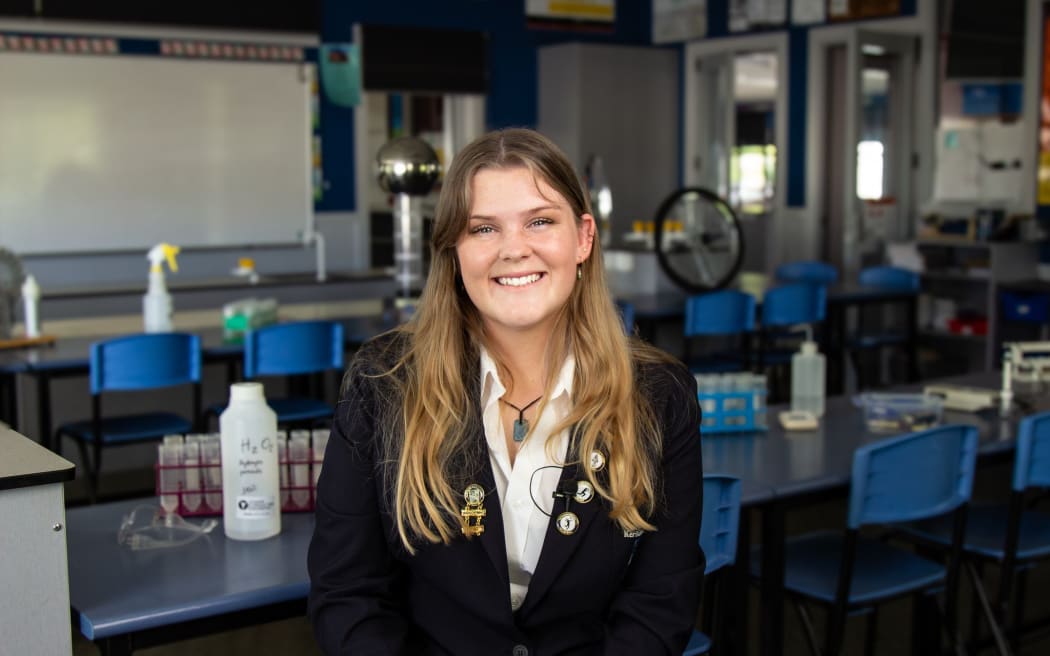
Sunny Perry of Kerikeri High School is the winner of the Te Puiaki Kaipūtaiao Ānamata Future Scientist Prize. Photo: Royal Society Te Apārangi
Follow Our Changing World on Apple Podcasts, Spotify, iHeartRADIO or wherever you listen to your podcasts.
The main prize winners - the Hereditary Diffuse Gastric Cancer Team - were interviewed by Susie Ferguson on Saturday Morning.
When Sunny Perry decided to make a map identifying locations of corrosive soil around Northland, she didn’t foresee the extra benefits.
Winning the 2023 Prime Minister’s Future Scientist Prize was a big one. Heaps of driving practice with her dad – which helped her pass her driving test – was another.
But there were downsides too: 5am starts, turning her bedroom into a chemistry lab, and having to let her dad pick the road trip tunes. “There were some very questionable choices sometimes,” Sunny says.
Road tripping for soil samples
In total, the duo visited 20 sites across Northland: from north of Kaitaia, all the way south to Mangawhai, and across to the west coast.
At each site, Sunny took triplicate soil samples at different depths which she then brought back to her makeshift chemistry lab to test for the presence of a certain type of soil – one that has the potential to cause damage to the environment and infrastructure if disturbed.
An aggressive soil
You may not have heard the term “acid sulphate soil”, but Whangārei District Council certainly has. This soil was the culprit behind corrosion of concrete pipes in the Marsden City development at Ruakākā, which cost ratepayers $5 million. Auckland Airport is aware too, since it had to add eight tonnes of lime to a stream on its property in 2016, after plants started to die around it.
These acid sulphate soils can form in waterlogged areas devoid of oxygen and rich in organic matter. They contain crystals of pyrite – iron sulphide minerals. When they lie undisturbed, they are safe and harmless.
But, if they are dug up or drained, and exposed to oxygen, the pyrite in the soil reacts with the oxygen, producing sulphuric acid. The acid lowers the pH of the soil, which can cause damage to plants, creatures, and infrastructure.
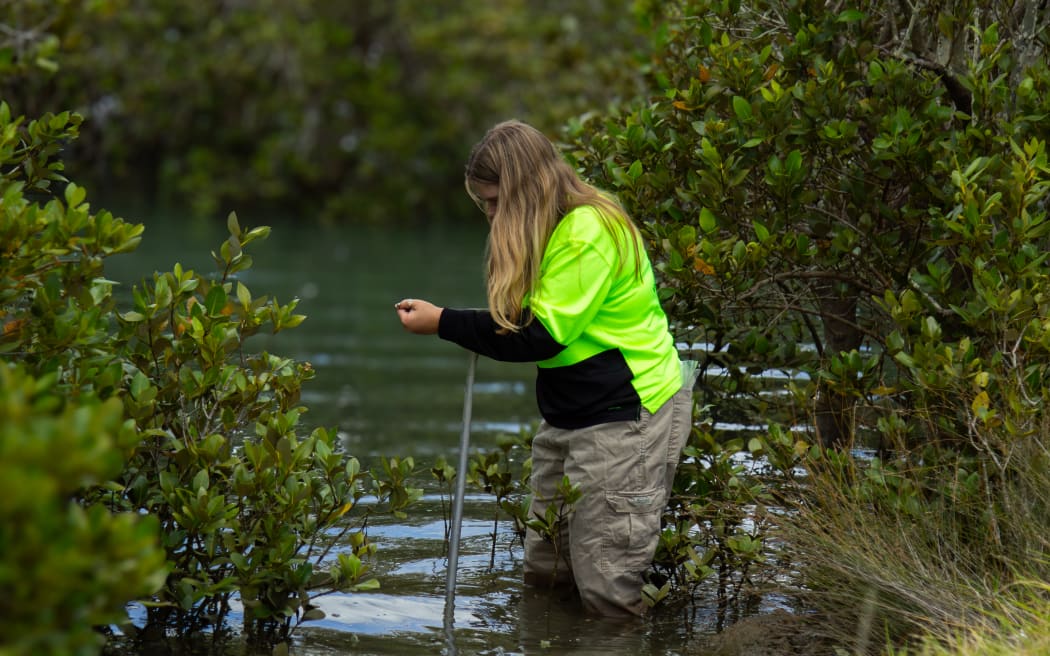
Sunny Perry sampled 20 sites across Northland to test for acid sulphate soils. Photo: Royal Society Te Apārangi
Where are these soils found?
To avoid disturbing these soils, you need to know where they are likely to be.
That’s what Sunny set out to determine. Using knowledge of the conditions needed for these soils to form, mapping skills developed throughout the project, and her soil sample testing, she has created a map of Northland which shows where these acid sulphate soils might be.
Sunny hopes it can be used to make good decisions about land management across Northland.
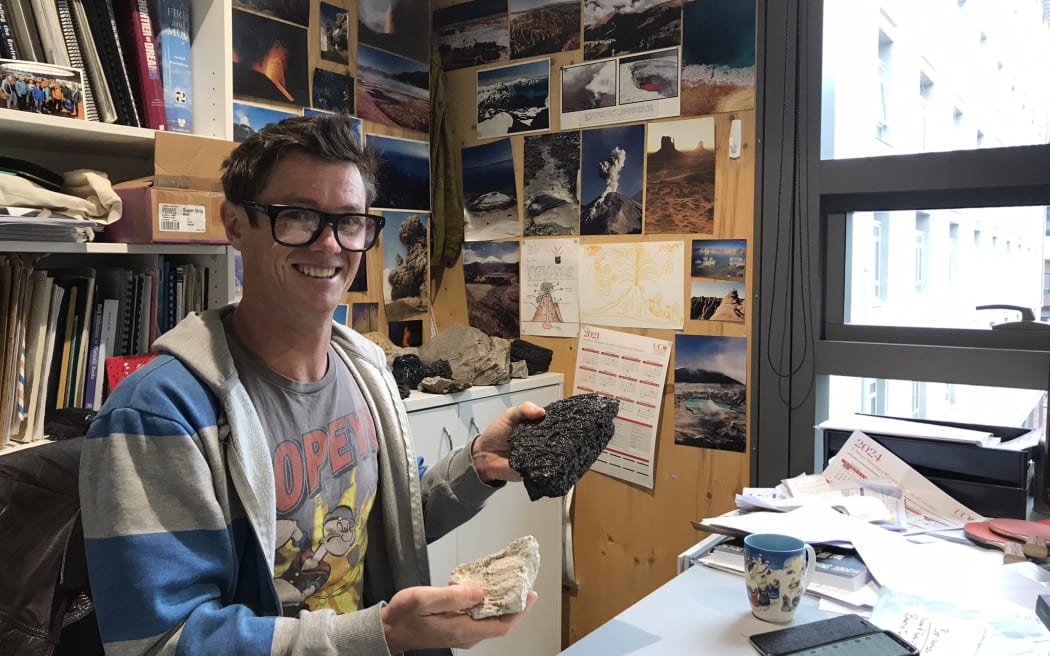
Professor Ben Kennedy with some of the volcano-themed décor in his office at the University of Canterbury. Photo: Claire Concannon / RNZ
Communicating about volcanic hazards
Professor Ben Kennedy is totally fascinated by volcanoes. This is clear the moment you step into his office at Te Whare Wānanga o Waitaha, the University of Canterbury. Two walls are covered of pictures of volcanoes erupting, there are also volcano models, board games, and rocks. Lots and lots of rocks.
He can trace this excitement back to fossil hunting as a kid with his uncle in the South of England, and a hike up the Chilean volcano Villarrica with his brother when he was a teenager.
And for many years when he talked about volcanoes this was his focus: sharing this excitement with those around him.
But when Whakaari White Island erupted on 9 December 2019, killing 22 people and injuring many more, Ben had to communicate about volcanoes in a tragic context. The experience led him to rethink his communication approach.
Now Ben has been awarded the 2023 Prime Minister’s Science Communication Prize for his innovative work informing communities about volcanic hazards and the uncertain risks of eruptions.
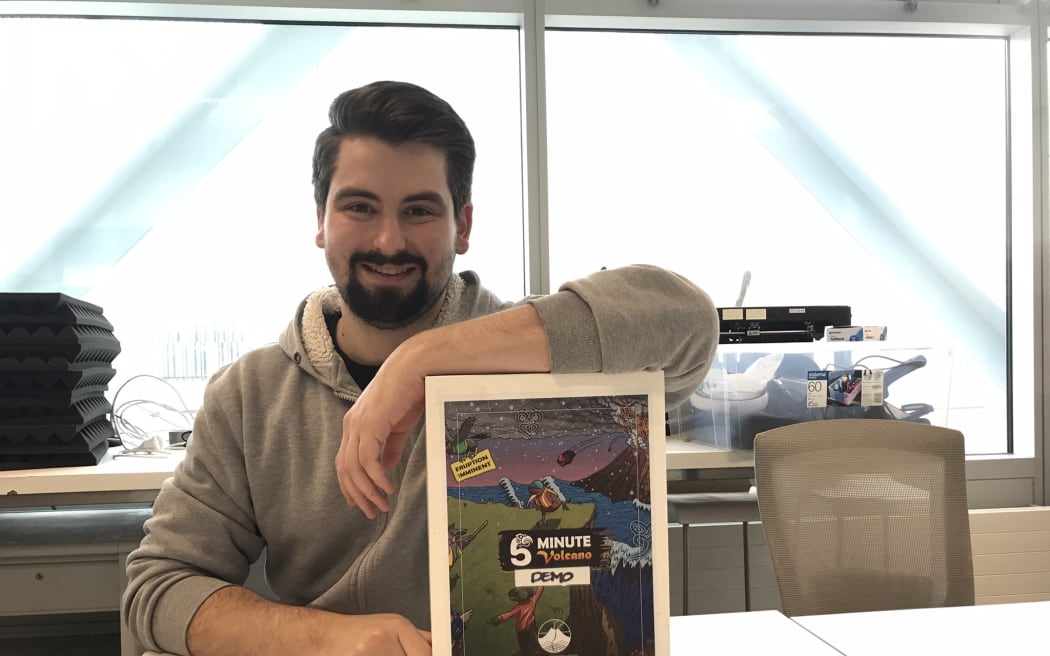
PhD candidate Kieron Wall with the 5-minute volcano hazard game he has developed. Photo: Claire Concannon / RNZ
He has used art, storytelling, computer and car games, puzzles, virtual fieldtrips, and camps for students and teachers. Plus, he created a weeklong outreach event in Rotorua called VolcanoFest which brought together volcano scientists, teachers, students, and the community.
Ben is currently leading the outreach section of the GNS Science-led Beneath The Waves programme. As part of this, PhD candidate Kieron Wall has developed a card game to engage tamariki with volcanic hazards and how different agencies cooperate to solve problems when eruptions happen.
Claire Concannon heads along to the human interface technology lab at the University of Canterbury to learn more.
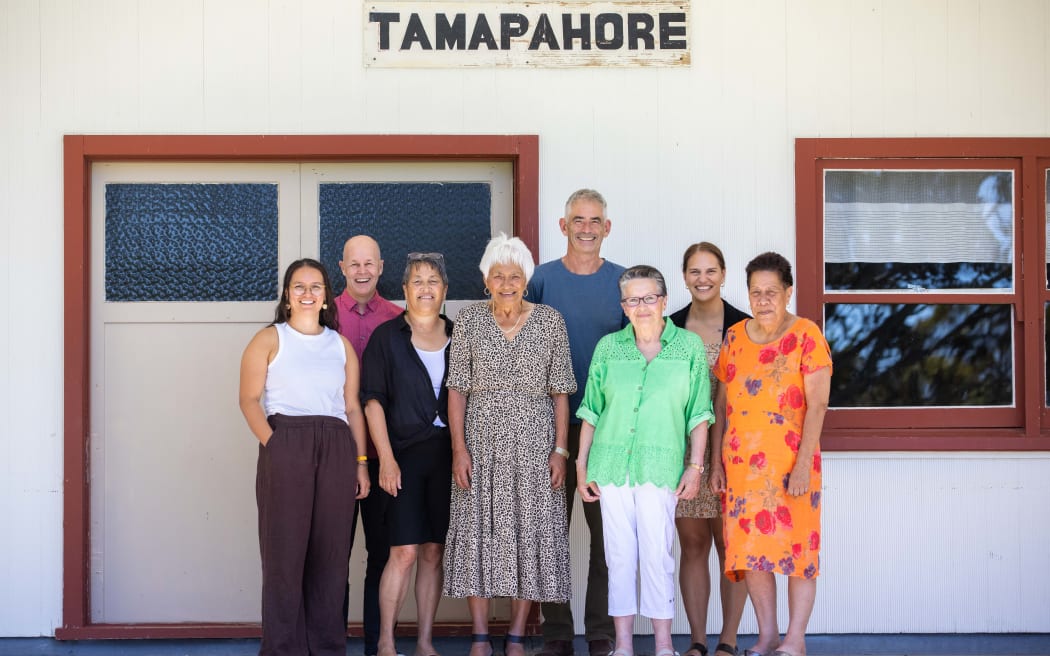
The Hereditary Diffuse Gastric Cancer team won the Prime Minister’s Science Prize – Te Puiaki Pūtaiao Matua a te Pirimia. Photo: Salina Galvan Photography / Royal Society Te Apārangi
Solving a lifesaving puzzle
This year, the main Prime Minister’s Science Prize – Te Puiaki Pūtaiao Matua a te Pirimia was awarded to the Hereditary Diffuse Gastric Cancer Team.
The team is a collaboration between members of the McLeod whānau and their community, cancer geneticists from the University of Otago, and clinicians from Tauranga Hospital.
The whānau-led partnership began almost 30 years ago and over that time has identified a genetic mutation which was causing members of the McLeod whānau to die from stomach cancer at a young age.
They then developed a genetic test to allow others both in New Zealand and worldwide to understand their risk of this cancer and to take life-saving preventative action.
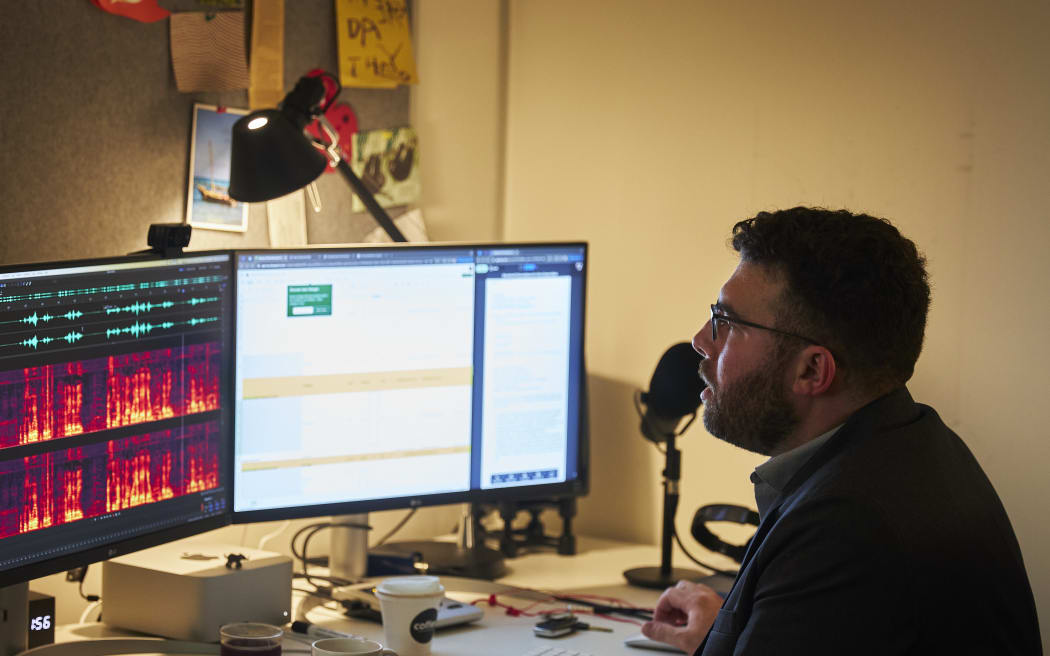
Dr Samuel Mehr of The Music Lab won the MacDiarmid Emerging Scientist Prize for his work on how humans perceive music. Photo: Matt Crawford / Royal Society Te Apārangi
The universal language of music
How do humans perceive and produce music? How do infants respond to music? What parts are universal, and which are cultural? Dr Samuel Mehr from Waipapa Taumata Rau, the University of Auckland, and Yale University has won the 2023 MacDiarmid Emerging Scientist Prize for his research trying to address these questions.
He has used diverse approaches from data science, evolutionary anthropology, psychology, linguistics, and music studies. Plus, a large-scale citizen-science project called The Music Lab where people around the world can play games that test their music processing abilities – that is, how good a person is at perceiving pitch, or detecting rhythm, or picking out different melodies.
His research with infants has shown that when they hear music that’s intended to be soothing, such as lullabies, it works – their heart rate slows, and arousal is reduced. His next step is to find out whether infants who hear more lullabies become calmer infants in general.
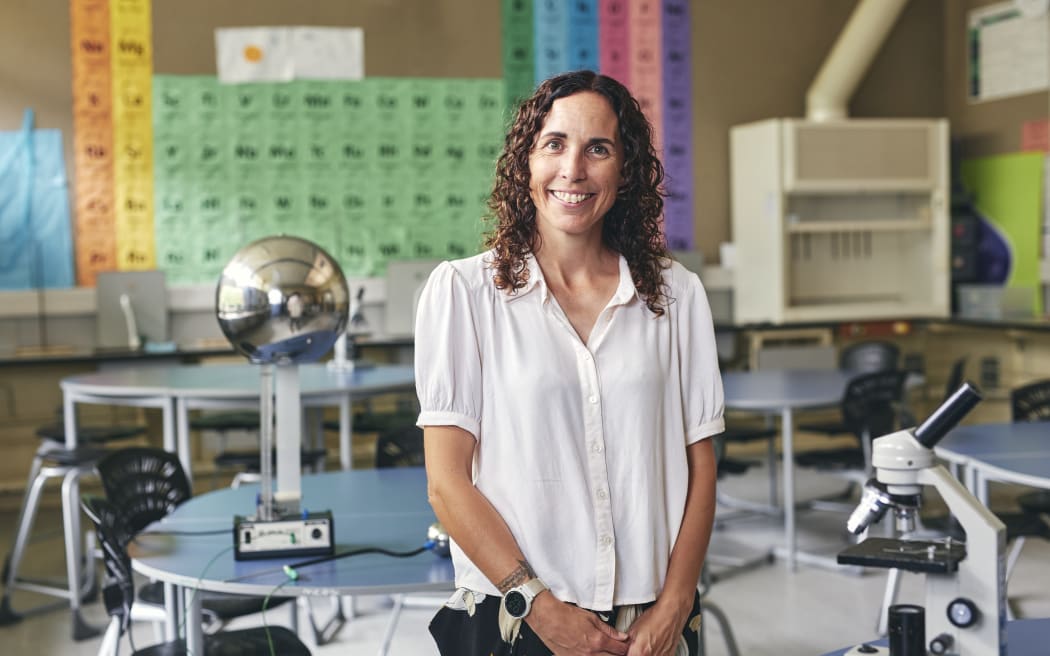
Madeleine Collins of Green Bay High School in Auckland won the Science Teacher Prize. Photo: Matt Crawford / Royal Society Te Apārangi
Tailoring teaching
The 2023 Science Teacher Prize was awarded to Madeleine Collins, for her approach in making each student feel valued, finding the hook to motivate each student to explore more, and enabling hands-on experiments and real-life science experiences for her classes.
Madeleine is a chemistry and science teacher and Associate Head of the science faculty at Green Bay High School in Auckland.
Learn more:
-
The Hereditary Diffuse Gastric Cancer Team were interviewed by Susie Ferguson on Saturday Morning
-
Dr Samuel Mehr spoke to Saturday Morning last year about his research.
-
Professor Ben Kennedy previously spoke to Our Changing World about homemade lava and drilling into a volcano’s magma chamber.
-
Listen to a 2005 Our Changing World interview with Professor Parry Guilford about the search for the stomach cancer genetic mutation.
-
Learn more about The complexities of soil.


